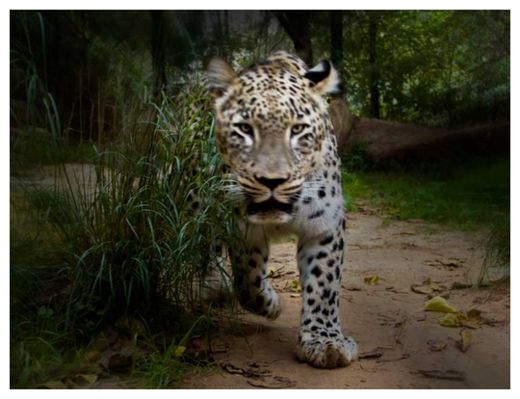
© iStockPhotoA leopard in Nepal has reportedly killed at least 15 people.
Certain animal predators may become serial killers of people, suggest animal experts and reports of multiple deaths inflicted by particular animals.
Most recently, a ravenous leopard in Nepal is believed to have killed and consumed at least 15 people over the past 15 months.
"It is not out of the realm of possibility that some individual animals may learn to target humans," George Burgess, director of the Florida Program for Shark Research, told Discovery News. "Large cats may come to view us as easy pickings under some circumstances."
In the case of the man-eating leopard in Nepal, a taste for salt might explain the horrific deaths, which last week likely included a 4-year-old boy whose head was found in a forest near his home.
Maheshwor Dhakal of the Department of National Parks and Wildlife Conservation in Kathmandu believes that as soon as leopards and other big cats start to prey upon humans, it is difficult to get them to stop.
"Since human blood has more salt than animal blood, once wild animals get the taste of salty blood, they do not like other animals like deer," Dhakal told CNN.
But developing a taste for humans, or anything, requires a learning process based on past experience. That isn't possible unless the predator can frequently encounter the "food source."
Johnny Rodrigues, chairman for the Zimbabwe Conservation Task Force, has told Discovery News that wild animals are often reported as being in urban areas "possibly because humans are encroaching more and more into areas previously reserved for wildlife, resulting in the destruction of their habitat."
In terms of big cats, the usual problem concerns deadly encounters with cows, sheep and other livestock. An animal that goes after humans is rare.
Burgess said that he knows of only two instances where individual sharks have repeatedly attacked humans. Both occurred in waters off of Egypt. In each instance, humans were to blame, although indirectly.
He explained that vessels from Australia and New Zealand were transporting live sheep to Egypt, since sheep are sacrificed there for a religious holiday.
"Sheep that died on the ships were tossed overboard," Burgess said. "Sheep defecate and urinate, so that waste was also being washed overboard. The result was a chum trail that likely went all the way from New Zealand to the Red Sea."
An oceanic whitetip shark and a mako shark appear to have followed this trail, winding up in more shallow water used for human recreation. Without sheep or other prey to eat, the sharks went after humans.
"So it's highly unusual for an individual shark or other animal to repeatedly prey upon humans, but it can happen," Burgess said.
Such encounters remind that humans were not always at the top of the food chain.
Kirsten Jenkins, a University of Minnesota anthropologist, explained that an early ape called
Proconsul -- thought to have been an ancestor to both modern humans and chimpanzees -- was good eats for numerous predators.
"I have observed multiple tooth pits and probable beak marks on these fossil primates, which are direct evidence for creodonts and raptors consuming these primates," Jenkins told Discovery News.
Earlier this year, remains of an enormous horned crocodile,
Crocodylus thorbjarnarsoni, were found next to
Australopithecus, a now-extinct human relative. Researchers suspect that the croc regularly dined on humans.
Moving to modern times, Burgess reminds that humans themselves can repeatedly target other humans.
"Think of someone like Jeffrey Dahmer, who reportedly ate some of his victims," he said. "Humans are the ultimate serial killers."
Reader Comments
to our Newsletter